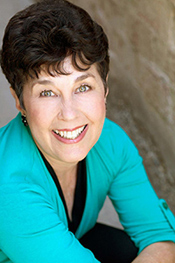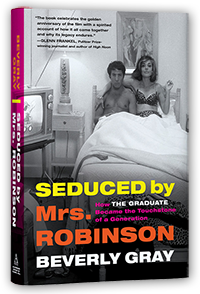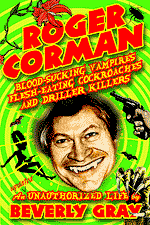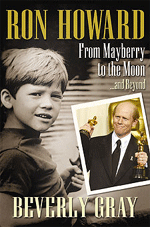When I first saw The
Searchers, I was baffled. I had sought it out because such tastemakers as
Steven Spielberg, George Lucas, and Martin Scorsese were proclaiming it one of
Hollywood’s greatest films. By the time I watched The Searchers, I had shaken off my parents’ disdain for Westerns. I
admired John Ford as a filmmaker, and knew to appreciate the iconic power of
John Wayne as a leading man. Still, the film
left me perplexed. There was, for one thing, its wildly shifting tone:
stark tragedy and raucous comedy danced cheek to cheek. The Searchers (1956) also
felt somehow shapeless, lacking the tightly controlled forward momentum of
Ford’s 1939 prizewinner, Stagecoach. And
the John Wayne of Stagecoach – a man
of rough-hewn but unmistakable nobility – is not exactly the John Wayne who appears
in The Searchers. As a Civil War
veteran who dedicates his life to finding the young niece abducted by Comanche marauders,
he definitely merits admiration. Yet he’s got a mean streak a mile wide. What
was I to make of that?
Unlike me, journalist Glenn Frankel has been a fan of
The Searchers since childhood. He grew up to work for
the Washington Post, earning a
Pulitzer Prize for his coverage of the Middle East. Perhaps his years of
observing the Arab-Israeli conflict gave him a special grasp of the tensions
between Indians and settlers that lie at the heart of Ford’s film. In any case, he’s earned cheers from
movie history buffs with his third book, The Searchers: The Making of an American Legend. Frankel knows everything worth
knowing about the conditions under which the film was made. I loved the details
about shooting in Monument Valley, a Navajo tribal reserve lacking pretty much
everything but gorgeous scenery: no telephones, no public water system, no
electrical grid. Most of the actors camped out in a tent city for months on end;
food and ice were trucked in from Utah. Ford was happy to improve the lot of
local Navajos by hiring them as extras, and used a local shaman to guarantee
favorable weather.
What I didn’t expect from Frankel’s book was a foray into
Texas history, and an introduction to the girl whose real-life abduction by
Indians inspired the movie’s plot. Cynthia Ann Parker was nine years old when
she was carried off by a Comanche war band that had massacred her parents. She
later married and had three children by her Comanche husband, before being
recaptured by Texas Rangers twenty-four years later. Though welcomed back by
family members, she never re-adjusted to the white man’s ways and apparently
died a tragic figure. Her uncle James’ obsessive search for her forms of the
core of John Ford’s movie.
In The Searchers,
young Debbie is mostly absent. She’s the McGuffin of the film, the object of
the search, without clear-cut desires of her own. As played by the young and lovely
Natalie Wood, she’s almost opaque. In contrast, there’s John Wayne’s role as
the tough, smart, angry, lonely Uncle Ethan. It’s part of Ford’s aesthetic to strip
away most of the explanations behind Ethan’s behavior. But surely Ford is exploring
the bold contradictions embedded within the frontier mentality. Says Frankel,
“While The Searchers pays homage to
the familiar themes of the classic Western, it also undermines them. Its
central character possesses all of the manly virtues and dark charisma of the
Western hero, yet is tainted by racism and crazed with revenge.” That’s what
makes The Searchers so fascinating. It’s
about square dances and family breakfasts and a murderous loner who’s still
heroic in his own way.








Great post, Beverly. I saw THE SEARCHERS for the first time about six or seven years ago, I guess? I've never been a huge John Wayne fan, but I do like some of his movies such as CHISUM and ROOSTER COGBURN. I blind bought THE SEARCHERS at the behest of my uncle and I did enjoy it.
ReplyDeleteIt's still a bit of a struggle for me (for one thing, Natalie Wood looks so modern, in pristine buckskin and with her 1950s makeup so beautifully intact), but it's a fascinating film. Martin Scorsese has written lyrically about it in The Hollywood Reporter. I'm glad you enjoyed the film, AND my post, Brian. And, by the way, welcome back!
ReplyDeleteThere are two classic American movies that I despise - and they are both Westerns. One is High Noon ("Oh help me, anyone! Bad men are coming and they might be ever so mean to me - so please come and do my job because I'm not brave enough to do or die.") Ugh. And the other is this movie - which tries to give me my Western hero - John Wayne - as a racist jerk who is planning to kill his niece if she's "gone Indian." Ugh again. By the way - I'm not sure if the VHS release from 20+ years ago went open matte on what should have been a 1:85:1 or 2:35:1 aspect ratio - but I can tell you that when I watched this movie on home video for the first (and only) time in the 80's - there were shots where they were shooting desert exteriors in the studio - and in the cropped video version you could plainly see the top of the cyclorama and set - making this giant classic seem awfully amateurish to my young mind. (Knowing more about aspect ratios these days - I'm willing to give the movie the benefit of the doubt that it was open matte on VHS.)
ReplyDeleteStill in all - not my cup of tea - glad you enjoyed it though, Ms. G!
Well, no one can say you aren't willing to be iconoclastic, Mr. C. I appreciate your feedback, even though I don't agree at all, especially about High Noon, which I believe has a powerful moral resonance. Do you side with the Big Boys, like John Wayne himself, who called High Noon unAmerican? It was made at a politically complicated time (1952), and there are certainly those who read a lot into it.
ReplyDeleteI think calling High Noon unAmerican is a bit much - I simply don't care for a Western where a perfectly fit and able man already elected Sheriff whines for 70 minutes about the bad men coming to his town - willing to put any number of townspeople at risk so they big bad men won't get him. Will Kane is - as we used to term it on the playground - a big ol' sissy. Had the movie starred someone along the lines of a Don Knotts or Tim Conway (obviously not in the early 50's, but someone like those guys) and the movie was a comedy where Our Hero is a coward - then that would have been fine. Will Kane took the job of Sheriff. It's his JOB to protect the town. Own it and do it. It isn't the townspeople's job to protect him and risk their lives doing it.
ReplyDeleteDid you know, by the way - there was a TV movie sequel made thirty years later? CBS gave us High Noon II: The Return of Will Kane with Lee Majors taking over the role. And there was a full on cable remake with Tom Skerritt as Kane in 2000.
I didn't watch them - as you might have guessed.
I haven't seen any sequels or remakes, but I've spent a lot of time with Karen Kramer, widow of High Noon's producer, Stanley Kramer, and she was connected to those projects. I can't say that I ever saw Gary Cooper in High Noon as a sissy. He's simply a human being who knows that, given the odds stacked against him, he's not Superman.
ReplyDelete